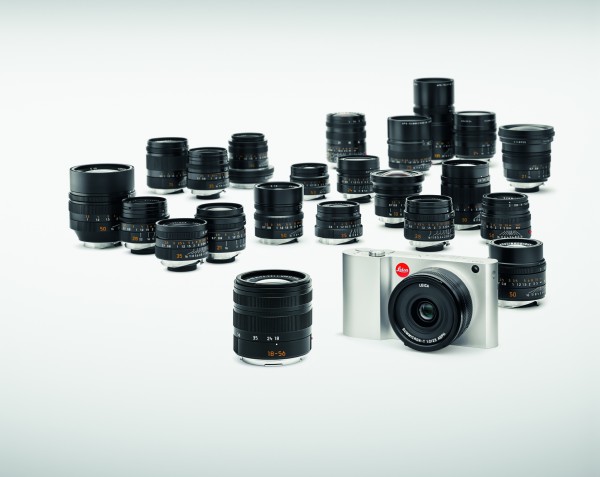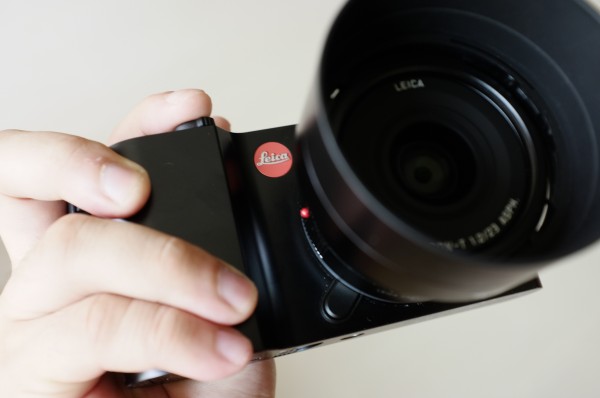Carved out from a block of aluminium, the Audi-designed Leica T is one sexy and sleek camera that can be said to be the Miss Universe of the mirrorless cameras. From the company famous for its rangefinder cameras, the T certainly has brought the mirrorless market a notch up.
For once, I do not need to lament the lack of a proper grip on a compact system camera. With the dimensions at 134 x 69 x 33 mm, the Leica T is tall enough to accommodate all four of my fingers yet small enough for pockets.
Some may say the smooth surface of the camera surface will make it tougher to hold it. I’d disagree. I find the presence of a ridge good enough to help get a good grip.
The camera may be minimalist in style but the thought that went into making the functional elements are anything but minimal. Just one simple pull of the on/off lever and the camera’s flash emerges out of the body.
The Leica T also has this unique strap system that lets you poke a needle through a hole in the camera body to unlock the neck strap. This is very much like the way you would change your phone’s SIM card. No more unsightly strap holders and eyelets.
The other notable innovation is the double locking system employed for the battery compartment. To remove the battery, you have to tap the battery one more time after it has popped out from the compartment. This prevents the battery from dropping to the ground or into an open drain if one is not careful.
The camera with the red dot has one of the best grips in the mirrorless market and yet doesn’t look ugly at all.
The best feature, on the Leica T, however, has to be its user interface. The most basic controls are via the two thumb wheels. The left wheel controls the aperture and the right controls the shutter speed when under Manual (M) mode.
The wheels will change different settings depending on the mode that the camera is engaged, which is very similar to how Sony’s α6000 works. That said, a wheel for the index finger is still better as it is faster and more comfortable to use.
To access other control parameters, the touch screen presents various settings in individual boxes, much like how Windows Phone Metro OS shows different apps on the home screen.
I can easily delete settings such as ‘Wifi on/off’ switch from my user menu since the Android App for the Leica T is not ready yet, and push more important items such as ISO, exposure metering, auto focus mode, white balance and drive mode to the top of the menu for quick access.
This is like dragging the apps from the app tray out into an Android smartphone’s home page. Thanks to the Leica T’s white on black design, it is also easy on the eyes and not as cluttered as some camera phones.
At launch, the camera can be equipped with either the T system’s Vario-Elmar-T 18-56mm (27-84mm full frame equivalent) f3.5-5.6 zoom lens or the Summicron-T 23mm (34.5 mm full frame equivalent) f2 prime lens. More lenses will be added later to the T system. Behind the lens is the proven APS-C CMOS 16-megapixel sensor with ISO ranging from ISO100 to 12,500.

Shot under artificial light, the red and green of the beef soup noodle are portrayed beautifully.

Sharpness and clarity aplenty when shooting in the right conditions.

Bright sunny day. Colour-wise, the camera tends towards blue under Auto White Balance settings that remind me of the colours recorded by Panasonic Lumix cameras.

Focusing is fast in bright environment and I managed to get this shot quickly.

Shot in ISO 800 at f2.0 1/15s. Face illuminated with the phone’s screen with noise starting to creep in but it is still very acceptable.

Straight out of the camera under Auto White Balance shot in ISO3200 at f2.0. ISO noise is very evident and details in the frame are murky. The maximum ISO setting I would use is ISO1600 and keep it at ISO800 as much as possible for the best quality.
The Leica T is, in no doubt, a very beautiful camera but when it comes to image quality, the camera exhibits results that are close to what I have seen in older camera models. The focusing can be patchy at times even with focus assist.
Because of its similarity with a rangefinder camera, I would sometimes instinctively pull the camera to my face to use the viewfinder when there isn’t one. There is an electronic viewfinder (EVF) attachment available for shooting in bright environment or when adopting a more stable stance to shoot. Still, it would be better to have a built-in EVF instead.
Using the attached EVF module would also mean that the external flash unit cannot be used. Okay, the T is not built for seasoned photographers but that doesn’t mean amateurs don’t or won’t appreciate the use of EVFs. It should have been included.
The Leica T costs S$4,950 with a Leica Vario-Elmar-T kit lens, which is not cheap considering one could get a Nikon Df at that price. The premium paid goes to the looks and the T certainly feels expensive and unique in the mirrorless market.
Throughout my tests, I find it very easy to manipulate the camera, thanks to the unique user interface. That’s a welcome relief from multiple button punching and menu hunting on many other shooters.
However, Leica may have placed too much emphasis on the aesthetics and ergonomics but skimped on image quality especially when shooting at higher ISO.
Worse, the camera has been launched in Asia without the accompanying Android app, thus limiting the functions of the camera further for Android users. It is best to wait for the app to be available to test the camera with before committing to the pricey system.






